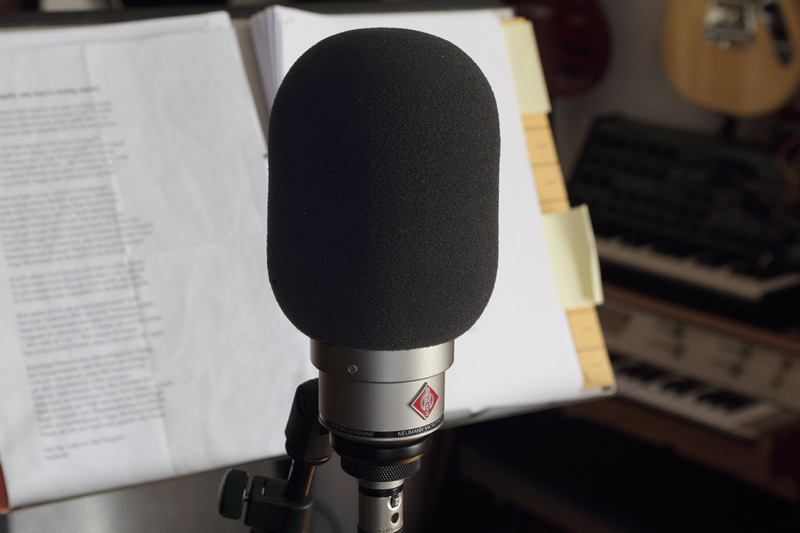HOW TO PROTECT YOUR MICROPHONE AGAINST “POPS”
Studio microphones tend to be quite sensitive to “pops”, i.e. those “explosive” noises that sometimes happen when certain speech consonants like P or B hit the mic capsule. So what is the best means of protection?
POP SCREENS VS. WINDSCREENS
Pop screens and windscreens get confused all the time. A windscreen is the kind of “hat”, usually made of foam, that you put on the microphone basket. The main purpose of a windscreen, you guessed it, is to protect the capsule from windblasts. Such foam windscreens, thus, are mainly designed for (open air) stage use and field recording.
But sometimes windscreens also get used as protection against “pops”, i.e. the kind of noises that happen, when certain speech sounds such as Ps and Bs hit the microphone membrane at close distance. Linguists call such speech sounds “plosives”, because we create them by releasing a small blast of air. And when this blast hits the membrane it sounds like an explosion, indeed. “Pops” can ruin a recording, because they’re often impossible to fix in the mix. If it’s just a very mild pop sound, you can use a low cut filter to make it less audible. But on heavier pops, the whole signal is distorted, which is something you can’t undo. So you better take care of “pops” during recording. Windscreens look like they should be a good means of protection, but they usually aren’t. It’s not what they are designed for.
Pop screens, also called pop filters are a dedicated means of protection against such “pops”. They usually consist of a ring holding two layers of thin fabric. In the 70s and early 80s, many studios used to make them by fitting nylon stockings over a loop of wire (as evidenced in the “USA for Africa” video). Today, there’s no need to resort to such DIY solutions anymore, as more professional looking products are offered commercially. They’re not terribly expensive, either. There are also pop filters made of metal mesh or perforated metal. There is no consensus among sound engineers as to which material is best.
Pop screens are much more effective against pop noises than windscreens. The latter also attenuate the treble response to some degree, while pop screens affect the sound far less.
WORKING WITH A POP SCREEN
For optimal results, mount the pop screen at least 10 cm (4 inches) away from the mic. It’s also a good idea to angle the pop screen slightly; this way you avoid sound reflections bouncing between the capsule and the pop screen. These reflections can lead to “comb filtering”, i.e. filter effects that make the sound appear artificial, especially the sibilants. Comb filtering sounds a bit like a static flanger effect.
As a rule of thumb, large pop screens sound more transparent than small ones. That’s because the ring that holds the fabric may introduce sound reflections, too. The larger the pop screen the further away is the outer ring from the mic capsule.
SOUND SAMPLES
- Without any protection
- Without a pop screen, low cut activated on the mic
- Windscreen (audible treble loss)
- With a pop screen
NATURAL PROTECTION
There are singers who don’t like singing through several layers of “pantyhose” fabric. It’s perfectly possible to record vocals without a pop screen, but it takes good mic technique. One thing you can do as an engineer is to position the mic top down, at about eye level, and angle it down toward the singer’s mouth. This requires a tall and sturdy mic stand. Also, the singer must take care to avoid singing Ps and Bs directly into the mic. However, this may get in the way of a truly emotional delivery.
SUMMARY
Pop screens are a much more effective means against nasty pops than foam windscreens. While experienced singers with good mic technique may not need any means of protection, at all, using a pop screen does make everybody’s life much easier. Singers can fully focus on their performance rather than watching their Ps and Bs, and the sound engineer can focus on getting great sounds and optimal levels.






